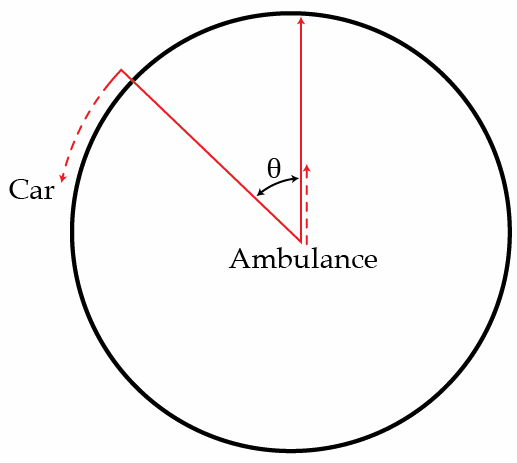Avoiding in a circle
An ambulance car is going with a speed of , while a car is trying to go around it in a circle with a speed . If the sound that ambulance car emits has a frequency of , which frequency does the driver of the car hear in Hz when the ambulance car is in the center of the circle it makes, and the car makes an angle with the direction of the car?

Details and assumptions
- Speed of sound in the air is .
The answer is 1044.
This section requires Javascript.
You are seeing this because something didn't load right. We suggest you, (a) try
refreshing the page, (b) enabling javascript if it is disabled on your browser and,
finally, (c)
loading the
non-javascript version of this page
. We're sorry about the hassle.
The ambulance moves upwards at 6 0 k m / h
When it is at the centre of the circle, resolving the components of its velocity, the ambulance is moving at 3 0 3 k m / h towards the car. Whereas the car moves perpendicular to that direction.
Hence the frequency heard by the listener is
f = f 0 v s o u n d − v s o u r c e v s o u n d = 1 0 0 0 ∗ 1 2 3 5 − 3 0 3 1 2 3 5 = 1 0 4 4